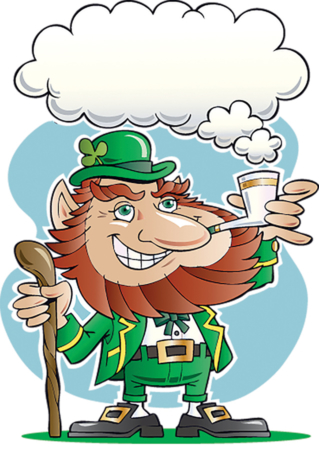The tricolor flag. A pint of Guinness. Bagpipes. Each of these things are symbols of St. Patrick’s Day, which celebrates the patron saint of Ireland every year on March 17.
While each of the aforementioned symbols is tangible, one popular image has proven a little more elusive. Leprechaun imagery is ubiquitous during St. Patrick’s Day celebrations, but even the most ardent Paddy’s Day revelers may know little about these mythical creatures.
Now widely depicted as tiny, bearded and mischievous men clad in coats and hats, leprechauns have been traced to ancient Ireland. The precise etymology of the word “leprechaun” is unknown, though many scholars believe the word we use today is derived from the old Irish “Lú Chorpain,” which means “small body.” Some scholars point to the 8th century word “luchorpán,” meaning “sprite” or “pygmy,” as the origins of the word leprechaun. Another word, “lubrican,” which first appeared in the English language in a 1604 play written by Thomas Middleton and Thomas Dekker, also has been linked to the modern word leprechaun.
Some historians believe the myth of the leprechaun has origins in ancient Ireland, when people believed the tiny creatures were among the various inhabitants of fairy forts and fairy rings throughout the Emerald Isle.
Another take on the source of the leprechaun myth is that these tiny creatures were modern incarnations of the Euro-Celtic god Lugh, who was the sun god as well as the patron of arts and crafts.
Manuscripts from the 12th to 15th centuries suggest leprechauns lived underwater and were not all male (modern leprechaun depictions are all male). In fact, the resource Ancient-Origins.net states that female leprechauns were depicted during this time as figures devoted to luring human men away for various adventures.
While 21st century celebrants of St. Patrick’s Day might be hard pressed to find images of leprechauns not dressed in green, that wasn’t always the case. Prior to the 20th century, leprechauns were described in various depictions as wearing red.
The images of leprechauns can be seen everywhere on and around St. Patrick’s Day, and those images have evolved considerably over the centuries.





Leave a Comment
Your email address will not be published. Required fields are marked with *